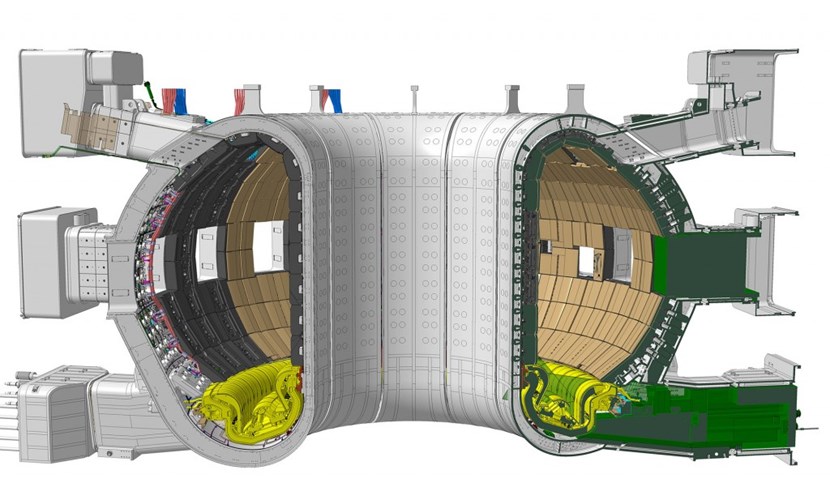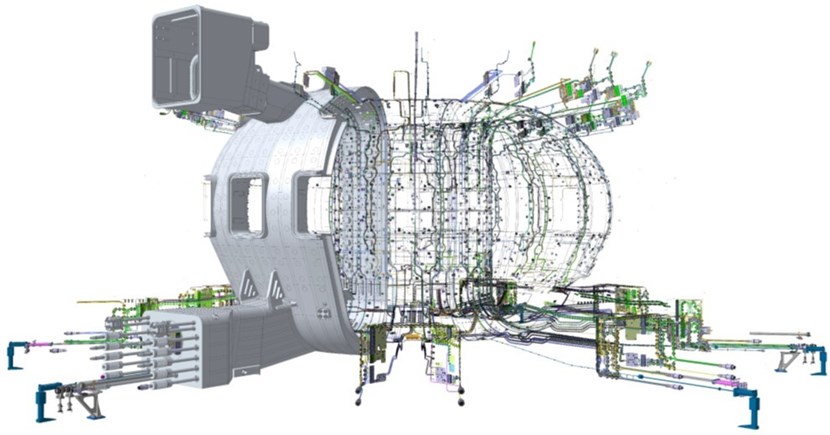ITER NEWSLINE
-
Assembly prep
Reviewing plans for in-vessel installation
Anna Encheva, In-Vessel Diagnostics Assembly Manager
Assembly prep | Reviewing plans for in-vessel installation
A thorough review of all "in-vessel" assembly scope was organized by the ITER Machine Assembly Program in early February, with the active participation of senior management. The review provided a panoramic view of the assembly tasks that will be carried out on the inside of the vacuum vessel, diving deep into the complexity and scale, the sequence and logic, the tools and infrastructure, and identifying technical and schedule-related opportunities and risks.

In the space inside the vacuum vessel (1,400 m³) tens of thousands of components must be installed--from tiny sensors to 10-tonne divertor cassettes. Specialized tooling, preparation and planning, training, and coordination were all discussed in this month's in-vessel assembly review on 8 to 9 February.
ITER in-vessel assembly begins after the nine sectors of the ITER vacuum vessel have been aligned and welded together and teams can start installing the captive components inside the vessel required for the first phase of ITER operation—AFP, or Augmented First Plasma, as described in the new baseline plans that are under elaboration by the ITER Organization and the Domestic Agencies.
The scope of in-vessel assembly includes tens of thousands of individual tasks. Diagnostic looms, loops, magnetic sensors, thermocouples, connectors, feedthroughs, waveguides, cables, and instrumentation; pipe-based pellet and gas injection systems; ELM and vertical stability in-vessel coils; blanket manifolds and blanket modules; diagnostic and heating port plugs; and divertor cassettes—all need to be installed within limited space constraints, according to an optimized sequence, and in good coordination with other engineering teams involved in coactivity.
Experience shows that precision and proficiency in executing assembly tasks is critical, particularly given the high volume of repetitive work. For example, approximately 1,000 sensors must be installed per vacuum vessel sector, while for the plasma chamber overall, 18 km of cables—housed in 99 looms—are supported by 9,000 clamps. The importance of commencing qualification well in advance of all processes and ensuring thorough training for operators was highlighted by review participants.
Other specific challenges such as the limited time available for the customization of components, limited clearance, and tight assembly tolerances are being addressed through comprehensive test and qualification programs and mockups.

The installation of diagnostic sensors—and corresponding thermocouples, connectors, loops, coils, cables and looms—is only one of the challenging in-vessel assembly tasks ahead.
As an example of a schedule-related opportunity, the group reviewed a set of purpose-built tools that is being planned to facilitate and optimize the assembly of the ITER blanket system and to allow for an earlier start for the installation of divertor cassettes. The blanket assembly tools are designed to facilitate co-activity in the vacuum vessel during critical phases, streamline the installation process and optimize resource utilization. In addition, the tools will be re-used in later assembly phases after upgrading to meet next-phase requirements.
Recognizing the essential role that metrology will play during the in-vessel assembly period, the review group mandated a fully developed metrology plan for the full in-vessel scope. A significant quantity of data must be processed for reverse engineering and the custom-machining of many system interfaces and supports in a short period of time. Additionally, participants emphasized the need to consider the intricate interaction between in-vessel and in-port works. Co-activity must be carefully considered, with the early anticipation of work interruption and robust protection measures to prevent possible component damage from subsequent activities.
In conclusion, the ITER in-vessel assembly represents a monumental engineering endeavour, requiring excellent preparation and planning, coordination, execution, and schedule and cost management. A comprehensive approach, addressing challenges and mitigating risks at every stage of the assembly process, will ensure the project's success.
return to the latest published articles








